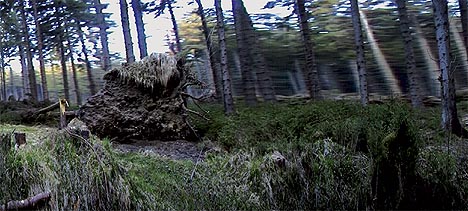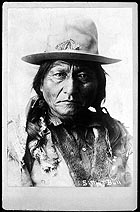
translated and summarized by: Liz Wollner-Grandville,
English summaries January 11 - 16
Schirn Kunsthalle Frankfurt: László Maholy-Nagy – Retrospective
Departure into the modern media world
Lászlo Moholy-Nagy’s constructivist compositions consisting of compatible dynamic circles and beams are leitmotifs of Modernism. His significant typographies represent the spirit of optimism of the 1920’s and 1930’s. Moholy-Nagy (1895 – 1947) is among the few who influenced the visual relevance of culture during the Weimar Republic. His concepts played a key role for the understanding of current media art - something that is often considered to be of secondary importance.
Particular importance of the Lászlo Moholy-Nagy retrospective presented at the Frankfurt Schirn Hall is laid on accentuating the universal artistic production and trans-medial thinking of the Bauhaus protagonists. His concepts, which aimed at penetrating spatial dimensions, are in the forefront of the media avant-garde, in line with those by representatives of abstract and experimental film such as Dziga Vertov, Oskar Fischinger or Len Lye.
Elements of reconstruction, sketches, and photos of stage scenery, shown in the documentary part of the exhibition at the Frankfurt Schirn, lead into his world of spatial constructions. But Lászlo Moholy-Nagy’s ideas went far beyond the categories of traditional theatre. His involvement with topographies, with the relationship of objects to one another and with light finally leads to the development of a multimedia environment. His “Light-Space-Modulator” (1930) can be interpreted as a mechanical anticipation of projections in the spheres of digital culture. His “Light requisite for electric stages” (1930) also points in this direction.
The actual take-off into the era of media art started with his “Telephone Picture EM1” (1922). It was developed in (almost) real time: during a telephone conversation with the department head of a sign factory, who transferred colour patterns on graph paper following Moholy’s directions. One year later, in 1923, Walter Gropius appointed him as Johnannes Itten’s successor to the state-owned Weimar Bauhaus where he promoted photography and later also in Dessau. During that time, the at first 'only' verbal atrocities spewed by the Nazis turned into physical ones. While in Italy representatives of the futuristic avant-garde such as Marinetti collaborated with fascists, and even in Germany some Bauhaus artists were indifferent or even affirmative towards National Socialism, László Moholy-Nagy, who was Jewish, emigrated via Amsterdam and London to Chicago and then to New York. The exhibition at the Frankfurt Schirn Kunsthalle impressively revives the moments of intellectual awakening in his oeuvre.
By Roland Schöny
Schirn Kunsthalle Frankfurt
60311 Frankfurt am Main, Römerberg, until 07.02.2010
www.schirn.de
Galerie Stadtpark: Rainer Gamsjäger, Stefan Lux – Equation with N Unknowns
Paradoxes of vision
A this year’s winter exhibition at the Galerie Stadtpark in Krems examples of video works question realities conveyed by pictures. The artistic strategies present the seemingly familiar, which, at a closer look, turns out to be feigned.
The video “Trifter 1” (2008), by the young Upper Austrian artist Rainer Gamsjäger, shows part of a forest as if it was filmed while passing or driving by. Suddenly the outlines of the forest become blurred, the trees topple horizontally and the forest floor reveals its interior. Gamsjäger dissected the film into 21 frames and devised a computer program, “which rearranges the vertical picture lines and thereby repositions the course of time into the space of the individual picture.” (Thomas Kroschil). The artist thereby nullifies the time dimension in the “motion picture” and transposes it into a spatial dimension. It is this picture cube, programmed by Gamsjäger, that we intently look at: while objects that are close seem compressed, those at a distance are stretched; a paradox develops.
Stefan Lux’s works also deal with awareness for the paradox. The Viennese artist with German roots shows two small works depicting a cinematic still life. In “Display 2009”, a swinging shell strikes a piece of paper attached to the wall with a needle, which in turn transmits an impulse for a minute cinematic image. It deals with a brief film within the image, which was arranged on a wall and was likewise filmed as a synthesis of the arts with the shell and the pinned pictures. In Krems, Lux once again projects the video on the wall and attains something like a fictional authenticity of the picture. In the cinematic picture, the colours of heat, of summer, of desert, play an important role and remind of videos by Omer Fast. The fragility of the arrangement develops a charm of its own.
Lux presents a similar arrangement with the video “Bild” (picture), in which a blue frog-like creature trembles its way across the wall in fleeting movements. Small needles mark the lines of motion of this amorphous blue figure like a map or a drawing. In reality, this is not a galvanic experiment but a blue blossom filmed floating on water, which Lux integrated into his video. Lux’s works are perceived as natural science studies, similar to the style of American or British natural science books. But in reality, both Gamsjäger and Lux’s works having nothing to do with nature. On the contrary: they show how technical calculations can change our view and ultimately manipulate and define it. A bulky, but remarkably courageous exhibition at the Galerie Stadtpark - worthwhile seeing.
By Susanne Rohringer
Galerie Stadtpark
3500 Krems, Wichnerstrasse, until 20.02.2010
www.galeriestadtpark.at
Museum für Völkerkunde: Sitting Bull and his world
Myth and man
Tatanka Iyotanka or Iyotake (1831-1890), better known as Sitting Bull, significantly influenced the image of Native Americans in the years marking the “Wild West”. The attributes connected to him, ranging from freedom fighter, “holy man”, demagogue, troublemaker, poet, painter, media star, role model for management strategies and loving father, created a very contradictory image of this historically significant man for the USA.
His Indian name “Sitting Bison animal”, symbolizes the courageous, nearly invincible, noble “wild” and ultimately he became a myth, a “green pioneer”. Sitting Bull was photographed nearly 60 times during his last 13 years, showing him in diverse roles - considering the photographic technology of the time, it is hardly surprising that he was presented in any other way but “frozen” - either sitting or standing: Sitting Bull, the family man, Sitting Bull, once with a hat, and - another time, on account of a facioplegia, with sunglasses and only a single feather on his head. And Sitting Bull with a Christian cross around his neck. He wore the present made by a clergyman as a sign of his respect for the “holy man”. Or as the worthy warrior and chief of the Hunkpapa, part of the Lakota Sioux, posing next to Buffalo Bill, whom he accompanied for four months on his famous Wild West shows.
The exhibition “Sitting Bull and his world” at the Vienna Ethnology Museum attempts to do the “last Indian” Tatanka Iyotanka justice - both as a myth as well as a man. Not an easy undertaking, which – at least from today’s European perspective – seems to be successful. The co-operation brought three museums together: The Völkerkunde Museum, Vienna, the Übersee-Museum, Bremen, and the Museum Centre Vaprilikki, Tampere (Finland).
The exhibition presents a comprehensive historical picture of his tribe and its family system. One learns that men did not have any say in household affairs or have any rights regarding their children (children from former marriages remained with their mothers). And one learns about the hostile American policy towards Native Americans during those years, and Sitting Bull’s “after life”, including the commercial exploitation of “Sitting Bull” as a brand.
By Marie-Gabriela Martinkowic
Museum für Völkerkunde
1010 Vienna, Neue Burg, until 05.03.2010
www.ethno-museum.ac.at
artlounge Strabag Kunstforum: Zsolt Tibor – Tested and considered
Ingenious details
In the extensive rooms of the Strabag Art-Lounge, the Hungarian artist Zsolt Tibor displays remarkably small and reduced works. They are charming drawings with a love of detail, never obstructing the overview over the entire composition. Nevertheless, the partly ingenious works lose their impact both on account of the way they are presented as well as the large number of less compelling works.
One could have easily done without the few partly humorous, partly bland assemblages, which focus on the monarchy. But on the other hand, they do not interfere too much with the overall impression, which is dominated by the drawings mentioned above as well as the ingenious pencil sgraffitti on the white walls. The latter are a great delight: not only taking a closer look at them, but also discovering them at the most incredible locations: an indefinable object hanging from the loudspeaker, mounted just beneath the ceiling, or a light switch decorated with wings…
These details, and individual, absolutely convincing compositions on paper, create the charm of this otherwise rather arbitrarily arranged exhibition.
By Wolfgang Pichler
artlounge Strabag Kunstforum
1220 Vienna, Donau-City-Strasse 9, until 22.01.2010
www.strabag-kunstforum.at
Mehr Texte von translated and summarized by: Liz Wollner-Grandville


 Teilen
Teilen




